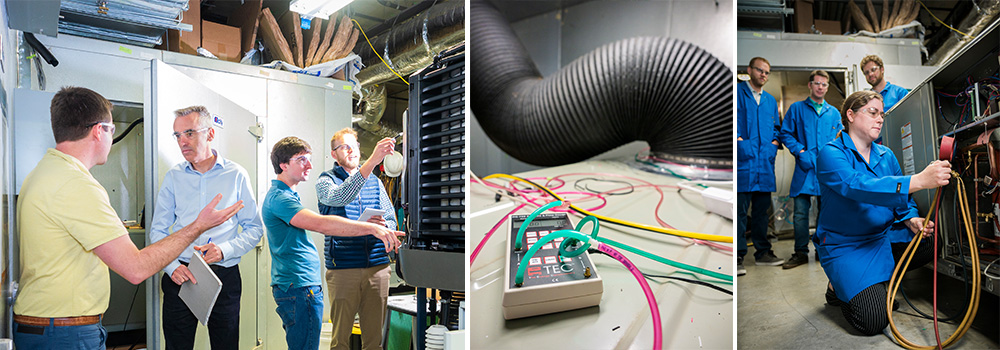
Refrigerants used in vapor-compression air conditioners and heat pumps are ubiquitous and have a high global warming potential (GWP). To help reduce the effects these greenhouse gasses have on our atmosphere, new environmental regulations require alternative refrigerant solutions with lower GWP. In general, there is a trade-off when choosing alternative refrigerants between performance, GWP, and safety.
The California Air Resources Board (CARB) approved a new regulation requiring refrigerants used in all new stationary residential air conditioning systems to have a 100-year GWP value of 750 or less. For reference, the most common refrigerant currently used in this equipment is R-410A which has a 100-year GWP of 2,088.
A number of refrigerant solutions have been developed to meet the CARB GWP requirement but the majority of these refrigerants are mildly flammable. While there are strategies for mitigating the risk of using flammable refrigerants, finding a non-flammable solution would provide the easiest path to market and would not require additional safety controls and standards.
CURRENT WORK
The WCEC is evaluating the
real-world performance of one refrigerant solution, R-466A, that meets the CARB
GWP limit and is also non-flammable.
The 100-year GWP is 733, which is 65% lower the R-410A and is design compatible
with R-410A equipment. Previous studies have shown that the efficiency and
capacity of R-466A are similar to R-410A, so equipment size would not be
significantly impacted. The system demonstrated for this project is a
production packaged rooftop unit developed by Trane that was retrofitted with a
different compressor design. The system will be installed on a UC Davis campus
facility where WCEC will monitor efficiency and capacity over several weeks to
evaluate the performance across a range of operating conditions.
PREVIOUS WORK
The WCEC performed lab tests evaluating two alternative refrigerants that meet CARB’s proposed limit in packaged air conditioners. These lab tests demonstrated that the alternative refrigerants operated with similar efficiency to R-410A across several outdoor air conditions and are design compatible with R-410A equipment.
One refrigerant, R-452B, is categorized as an A2L and demonstrated a 5% improvement in efficiency at the 95°F outdoor air condition. This refrigerant only required a minor adjustment to the thermal expansion valve to commission with the new refrigerant.
Another refrigerant tested, R-466A, is categorized as an A1 meaning it is non-flammable and showed a slight reduction in efficiency over R-410A. Being an A1 refrigerant, this product could more easily meet current building code regulations, but there have been issues with using this refrigerant with common metals found in air conditioners. One solution is to change the compressor in the system with one that does not contain the incompatible materials.
RESOURCES
PUBLICATIONS
- R-466A Refrigerant Demonstration and Performance (2022 | Case Study)
- Performance Testing of R-466A: A Low Global Warming Potential Alternative Refrigerant (2019 | Case Study)
- Performance Testing of DR-55 (R-452B) as a Replacement for R-410A Refrigerant (2017 | Case Study)
Sponsors: Trane Technologies
